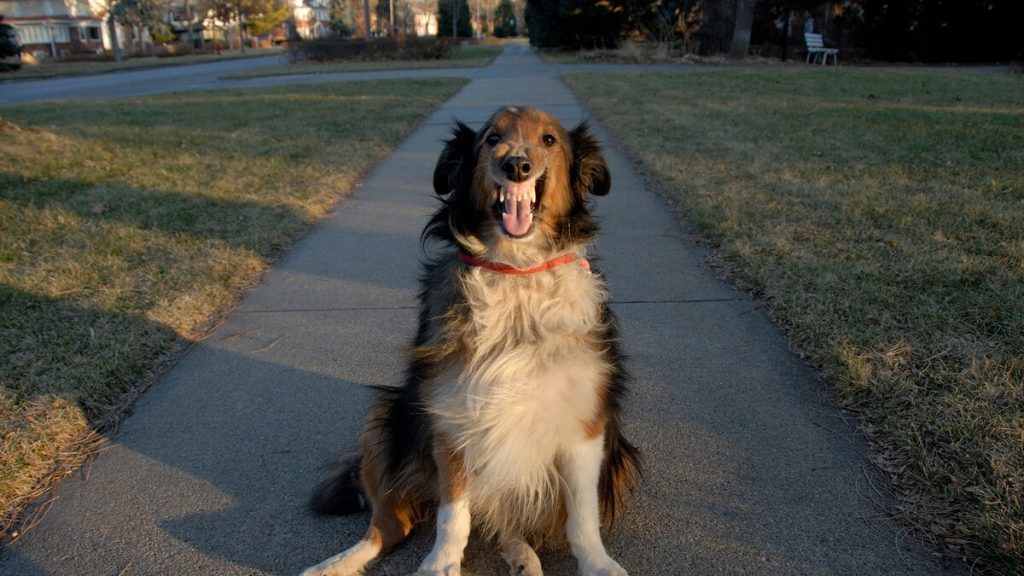Understanding and preventing dog aggression could save lives, both human and canine. A new study offers clues.
A new study shows two hormones may play a role in scary canine behaviors.
Dogs might be humanity’s best friend, but that friendship isn’t without a few bumps. Wagging tails and slobbery kisses can become barking, growling, and biting. Some dogs make this transition more readily than others, and Evan MacLean wanted to understand why. MacLean, a psychologist and anthropologist at the University of Arizona, believed that hormones could help explain this difference.
In a new study in Frontiers in Psychology, MacLean and colleagues reveal that levels of the hormones oxytocin and vasopressin influence canine social behaviors and aggression. Service dogs, bred for their placid temperament, have significantly higher levels of oxytocin in their blood than the average pooch. Those dogs that were more aggressive towards other dogs, however, had more vasopressin. (Read why some dogs are hypersocial.)
“This is the first study that looked at vasopressin and aggression in dogs, and the work opens up novel treatment opportunities,” according to Sue Carter, a biologist at the Kinsey Institute at Indiana University who co-authored the study and has studied these hormones for several decades.
Under the right circumstances, most dogs can show aggression. The usual triggers include threats to their food and even just seeing other dogs and/or humans. It’s a common problem for dog owners, explains Julia Meyers-Manor, a canine expert at the University of Minnesota, who used to help train dogs at the Twin Cities Humane Society and wasn’t associated with the recent study.
“Our classes were always full,” she says.
Being on a leash can be especially challenging for some dogs at first, Meyers-Manor says. “They feel trapped, like they can’t escape. And sometimes the best defense is a good offense.”
The result is 4.5 million dog bites in America each year, according to the Centers for Disease Control and Prevention. Aggression is also the leading reason most dogs are surrendered to shelters. Understanding and preventing dog aggression could save lives, both human and canine. (See also: Dogs have feelings—here’s how we know.)
Like many behaviors, aggression is a combination of both nature and nurture. Early life experiences can shape adult aggression in dogs, but so can the dogs’ temperament, a characteristic partly controlled by hormones. (See also how dogs are even more like us than we thought.)
Carter began her career by asking whether oxytocin, known for its role in childbirth and mother-baby bonding, could also explain why prairie voles (Microtus ochrogaster) mated for life. Indeed, levels of oxytocin spike in prairie voles after they build a nest and begin mating. But Carter also noticed something unusual. After mating, male prairie voles became aggressive towards other voles (their partner excepted). Further experiments revealed vasopressin as the culprit. Block vasopressin and the male voles shifted back to their more peaceable selves.
Other scientists showed similar results in a variety of species, but no one had yet applied them to domestic dogs. MacLean began considering oxytocin and vasopressin after a search of the scientific literature failed to reveal a strong candidate. Researchers proposed high testosterone levels as an aggression culprit, but neutered male dogs weren’t always less aggressive than intact ones. Researchers also found mixed results for serotonin, implicated in anxiety and depression. But the effects of oxytocin and vasopressin were similar across a wide range of animals, which gave MacLean hope. (See also: Does your dog know you’re pregnant?)
Like most dog behaviors, aggression is a combination of nature and nurture. Researchers found that service dogs tend to have higher levels of the hormone oxytocin.
He began by recruiting dogs that showed unprovoked aggression towards other dogs and matched them with non-aggressive dogs that were identical in age, sex, and breed. The researchers took blood samples to measure vasopressin and oxytocin levels before the experiments began.
MacLean then had their owners walk the dogs by one of three different stuffed dogs to measure their responses, followed by another blood draw. Not surprisingly, the aggressive dogs growled, lunged, and barked more at the stuffed dogs than their non-aggressive counterparts. They also had significantly more vasopressin in their blood.
In a separate experiment, MacLean and colleagues exposed assistance dogs to either a threatening stranger or an unfamiliar dog. In both cases, the service animals remained calm and had higher blood oxytocin levels than standard pet dogs.
“Before we can work to alter aggression, we need to understand its basic biology. No one had even looked at these other hormones before,” MacLean says. These results provide a novel jumping-off point, although MacLean cautions that it’s still not clear whether vasopressin is causing the aggression or is released in response to aggression.
The work may not have told us who’s a good boy, but it might help owners understand why Fido isn’t.

